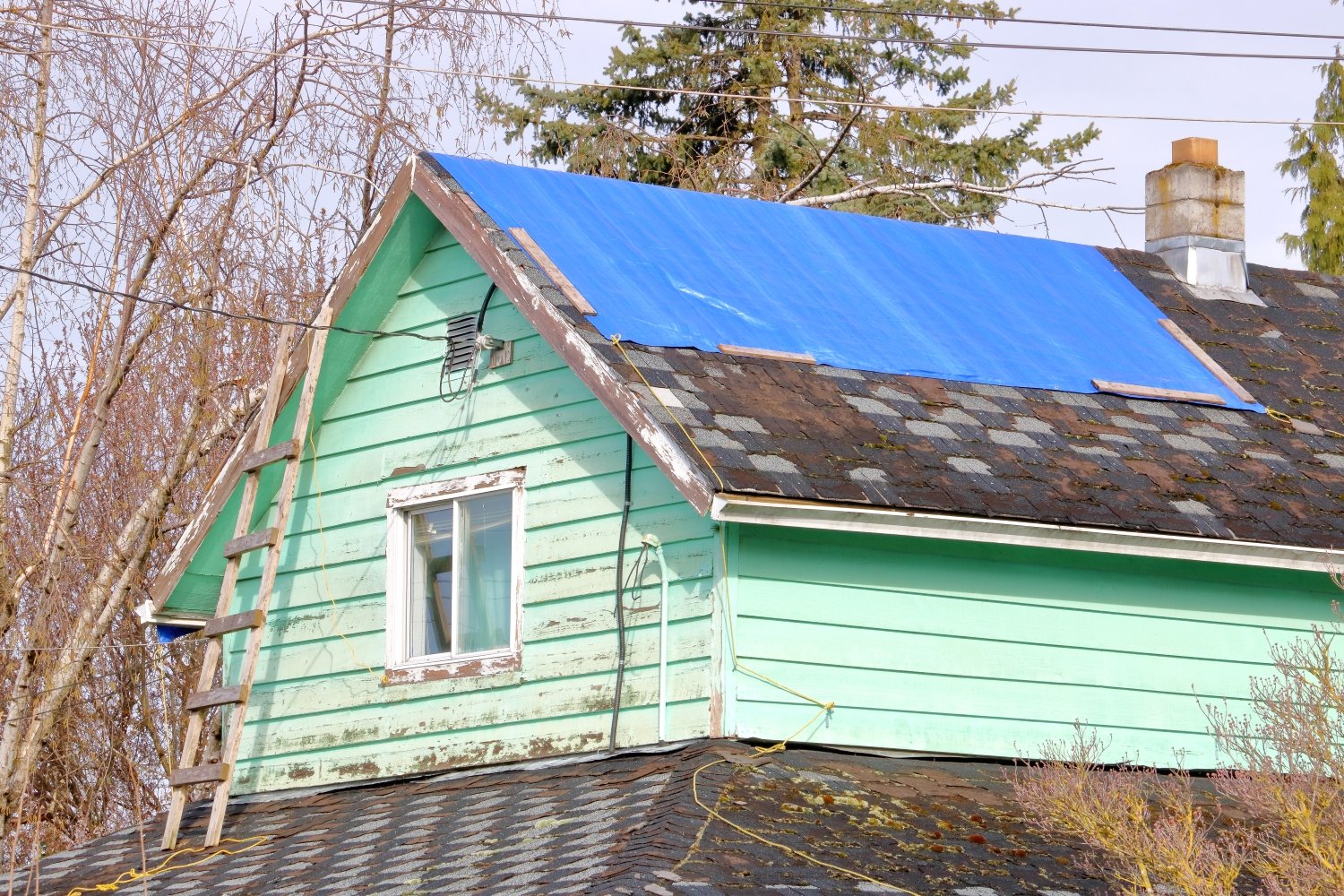What is The Best Time of Year to Replace a Roof?
Your roof is an essential component of your home, protecting you and your belongings from the elements. However, over time, it may deteriorate and require replacement. One question many homeowners have is, "What is the best time of year to replace a roof?" In this article, we will explore various seasons and factors to consider when scheduling a roof replacement.
Lead Times
While many roofing companies will have very long lead times, we take pride in offering very short lead times regardless of the time of year. Give us a call to experience for yourself how quickly we can make your roofing project happen.
Fall Roof Replacement
Pros:
Mild weather conditions with cooler temperatures and lower humidity.
Comfortable working conditions for the roofing crew.
Ample time to address any issues before the harsh winter weather sets in.
Cons:
Availability of roofing materials may vary depending on the region.
Contractors may have a busy schedule due to the popularity of fall roof replacements.
Fall is often considered one of the best times to replace a roof. The weather is generally mild, with cooler temperatures and lower humidity compared to the summer months. This makes it more comfortable for the roofing crew to work and allows the new roofing materials to set properly. Additionally, fall is before the harsh winter weather sets in, providing ample time to address any issues before the colder months arrive.
Spring Roof Replacement
Pros:
Warmer weather allows for easier outdoor work.
Opportunity to address any damage or issues from the winter months.
Longer daylight hours for extended work time.
Cons:
Potential for rain and unpredictable weather during the spring season.
Contractors may have limited availability due to high demand.
Spring is another popular season for roof replacement. With the arrival of warmer weather, it becomes easier to work outdoors. Springtime roof installations also allows homeowners to address any damage or issues that may have occurred during the winter. However, it's important to consider the potential for rain and unpredictable weather during this season. Scheduling the replacement when the forecast is clear can help ensure a smoother process.
Summer Roof Replacement
Pros:
Long daylight hours and optimal weather conditions for efficient work.
Materials set quickly in the warm temperatures.
Higher availability of roofing materials and contractors.
Cons:
Potentially higher demand for roofing companies during the summer, requiring advanced booking.
Extremely hot temperatures may cause discomfort for the roofing crew.
Summer is a common time for roof replacements due to the long daylight hours and optimal weather conditions. Contractors can work efficiently, and materials tend to set quickly in the warm temperatures. However, it's worth noting that early summer can be a busy season for roofing companies, so it's advisable to book in advance to secure a preferred date.
Winter Roof Replacement
Pros:
Potentially lower demand, leading to more flexible scheduling and availability.
Contractors may offer discounts or special winter pricing.
Opportunity to address urgent issues before the winter weather worsens.
Cons:
Cold temperatures, snow, and ice can make the process more challenging.
Roofing materials may become brittle, and proper sealing and adhesion can be compromised.
Limited daylight hours may extend the project timeline.
While winter is generally not the ideal time for roof replacements, it is still possible to replace a roof during this season. However, it comes with some challenges. Cold temperatures, snow, and ice can make the roof removal process more difficult. Roofing materials may become brittle, and proper sealing and adhesion can be compromised. Nonetheless, experienced contractors can take precautions to ensure a successful winter roof replacement.
Cost to Replace Roofing vs. Repair
When considering roof maintenance, it's essential to evaluate whether a full replacement or a repair is necessary. The cost of replacement versus repair depends on various factors such as the extent of damage, age of the roof, and type of roofing material. In general, if the damage is localized or limited to a specific area, repair might be a more cost-effective option. However, if the roof is nearing the end of its lifespan or has widespread damage, a full replacement may be the best long-term solution.
Can You Replace a Roof in the Winter?
Yes, it is possible to replace a roof during the winter, but it requires careful planning and consideration. Roofing professionals who have experience working in cold weather conditions can take precautions to ensure a successful roof installation there. This includes using specialized materials designed for colder temperatures and taking measures to prevent materials from freezing or becoming damaged. It's important to work with a reputable roofing company that has expertise in winter roof replacements.
Cold Weather Roofing Tips
If you decide to replace your roof during extreme heat or cold weather, here are some essential tips to keep in mind:
Choose a dry and mild day: Schedule the installation on a day when there is no snow, ice, or rain forecasted.
Use appropriate materials: Ensure that your roofing contractor uses materials specifically designed for cold weather installations.
Allow extra time: Cold temperatures can slow down the installation process, so be prepared for the project to take longer than usual.
Clear snow and ice: Before the installation, make sure the roof is clear of any snow or ice buildup to provide a safe working environment.
Installing Shingles in Cold Weather
Installing shingles in extreme cold temperatures and weather requires additional attention and care. Here are a few key considerations:
Keep shingles warm: Store the shingles in a warm area or use a heated enclosure on the roof to prevent them from becoming brittle.
Use specialized adhesives: Cold weather adhesives are designed to provide better adhesion in low temperatures.
Nail placement: Adjust the nailing pattern to ensure proper shingle sealing, as cold temperatures can affect the sealing process.
What is the best type of roofing material for hot climates?
In hot climates, it's important for roofing contractors to choose a roofing material that can withstand high temperatures and effectively reflect sunlight. Some popular options include:
Metal roofs: Metal roofs have excellent heat resistance and are known for their ability to reflect sunlight, keeping the house cooler. These are often installed in commercial roofing.
Clay or concrete tiles: These materials have high thermal mass, which helps in reducing heat transfer into the house.
Cool roofs: Cool roofs are typically made of materials with high solar reflectance and thermal emittance, effectively reducing heat absorption.
Additional Roof Replacement Cost Factors to Consider
When planning for a roof replacement, it's crucial to consider additional cost factors beyond the basic material and labor expenses. Some important factors to keep in mind include:
Roof size and complexity: A larger or more intricate roof design may require more materials and labor, thus increasing the overall cost.
Accessibility: If your roof is difficult to access or requires additional equipment, such as scaffolding, it may incur additional charges.
Roofing permits and inspections: Depending on your location, obtaining permits and scheduling inspections may involve additional fees.
Roofing Costs by Type
Different roofing materials come with varying costs. Here's a general overview of roof costs and the average cost per square foot for common roofing types:
Asphalt shingles: $2 to $5 per square foot.
Metal roofing: $5 to $12 per square foot.
Clay or concrete tiles: $10 to $20 per square foot.
Wood shakes or shingles: $6 to $10 per square foot.
Need help figuring out the cost for a new roof? Schedule a free estimate with us today!
Best Temperature to Install Roof Shingles
The ideal temperature to install roof shingles depends on the specific manufacturer's guidelines. However, as a general rule, it is recommended to install shingles when the ambient temperature of entire roof is above 45°F (7°C). This temperature range allows the shingles to properly seal and adhere to the roof.
Full vs. Partial Roof Replacement Costs
Deciding between a full or partial roof replacement depends on the condition and age of your existing roof. While a partial replacement may seem more cost-effective, it's essential to consider the long-term implications. If the old roof really is near the end of its lifespan or has extensive damage, a full replacement might be a more prudent investment. A reputable roofing contractor can assess your roof's condition and provide guidance on the most suitable option.
Don’t know which type you’ll need? Give us a call we’d be happy to help.
How often should a roof be replaced?
The lifespan of a roof depends on various factors, including the type of roof construction, of material, local climate, and maintenance. On average, asphalt shingle roofs last about 20 to 25 years, while metal roofs can last 40 to 70 years. However, it's important to have regular roof inspections to identify any signs of damage or deterioration. A professional roofer can assess the condition of your roof and recommend whether repair or replacement is necessary.
Should I repair my roof on my own or hire a professional?
Repairing a roof can be a complex and potentially dangerous task, so it is generally recommended to hire a professional roofing contractor. Roofing professionals have the necessary expertise, equipment, and safety measures to ensure a high-quality repair or replacement. They can also identify underlying issues that may not be apparent to an untrained eye, saving you from further problems down the line. Hiring a professional provides peace of mind and ensures that the job is done correctly and safely.
With over 30 years of roofing experience, we’ve got you covered. Eliminate any risk of doing the roof yourself and have us protect your home for years to come.
In conclusion, the best time of year to get a roof replaced as a new roof depends on various factors




